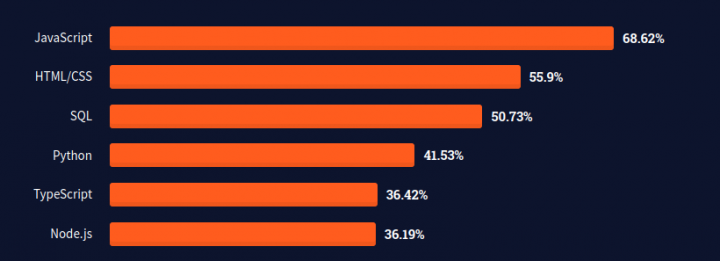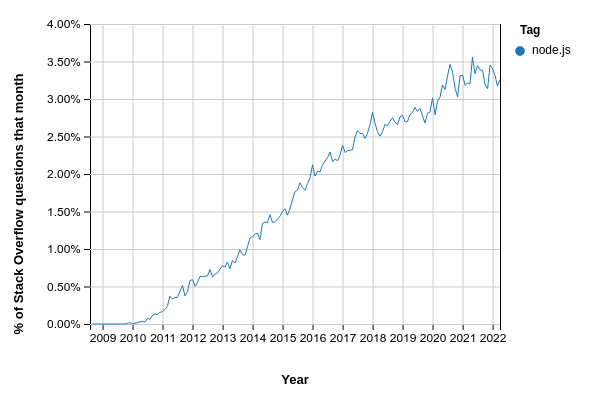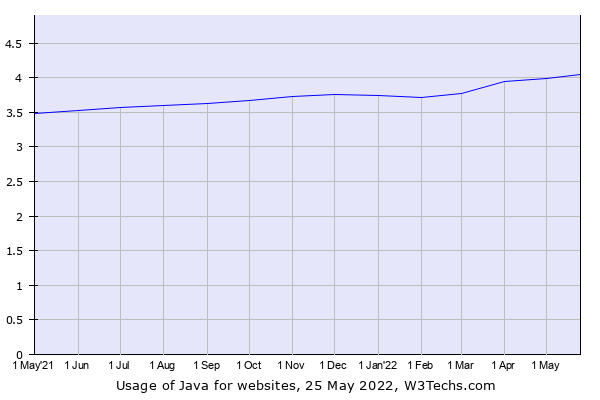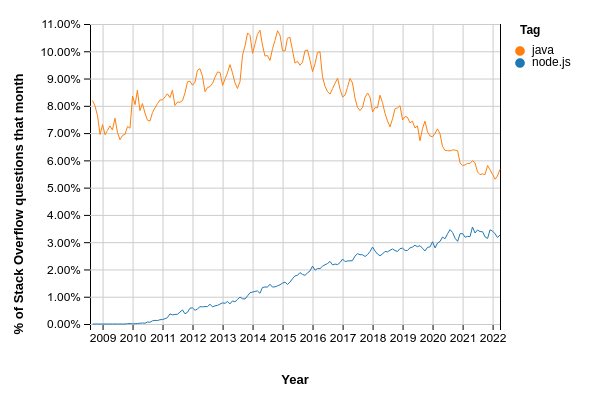Constant pursuit of enterprise web apps’ top-notch performance and security requires a thorough understanding of underlying technologies’ specifics. This is vital not only during the preparation of a software development project but also during the whole product lifecycle. In some scenarios, the existing tech stack can be reconsidered and some technologies can be replaced with more suitable ones. As an example, we can consider the story of product transformation that happened after Netflix and PayPal started using Node.js as one of their key technologies.
However, this example doesn’t necessarily mean that Node.js or any other language or framework will satisfy the needs of any business company on the planet. Choosing a specific software development technology following someone else’s example does not always guarantee the best possible outcomes. In this article, we’ll shed some light on the major differences between Java and Node.js to help you make informed decisions regarding the tech stack that will better suit your requirements.
Node.js and Java Brief Introduction
Let’s start with the youngest of our two contestants. Node.js was invented in 2009, and, unlike Java, it’s not a programming language. Despite that, there’s some “Java” in it. Node.js is a server-side runtime environment that relies on JavaScript most known for its unsurpassed qualities in front-end development. Node.js helps to widen the possibilities of this programming language and execute the code written with it on the server side. Additionally, the availability of such frameworks as Nest.js, Meteor.js, Socket.io, and Express provide extra backend compatibility.
Node.js is recognized among web developers. The StackOverflow survey shows that more than a third of professional developers regularly use it in their projects:

The discussion around this development technology is constantly rising since its first appearance, which reflects community interest and involvement:

Read Also Node.js vs PHP
The Java programming language is a product of a different era. Being born in the early 1990s, it had a significant impact on many other programming languages, including JavaScript. It not only partially inherited its name but also has some similarities in syntax and standard libraries. However, it’s important to note that despite these similarities, Java and JavaScript differ greatly in design and area of application.
Java is one of the most widely used object-oriented programming languages that follow the principle “write once and run anywhere”. It means that any device supporting Java can run applications written using this language with no troubles. When we speak of Java, we should also mention that the use of Java Virtual Machine allows developers use one of four platforms (and one language to rule them all): Standard Edition (SE) for writing the code for desktops and server environments, Enterprise Edition (EE), as the name suggests widens the SE platform possibilities with enterprise features, Micro Edition (ME) is intended for mobile and embedded applications, and JavaFX that helps to build Rich Internet Applications.
Currently, Java runs under the hood of over 4% of websites and is in charge of 38,921 unique domains.

However, the level of popularity among programmers does not look so optimistic compared to Node.js. Java is still more popular on StackOverflow but the peak of interest in it was in 2014-2015 and has been gradually fading since then:

Of course, this doesn’t mean that this programming language has become irrelevant. There’s always the chance that developers have mastered their Java programming skills to a level when no one needs to clarify anything on StackOverflow.
Side-by-side Comparison
Both Java and Node.js are outstanding techs. They both have long years of evolution and an extensive development community behind their backs. But the overall number of developers interested in a given programming language doesn’t give a strict answer to the fundamental question: will a specific enterprise benefit from adopting one of them? To make it clearer, let’s compare how Java and Node.js compete in different areas.
Let’s start with the performance. If blazing-fast apps are one of your priorities, we recommend you to consider Node.js application development as your number one option. It inherits from JavaScript some performance-critical features, such as asynchronous and non-blocking behavior. As a result, dozens of small tasks can be performed by Node.js apps without affecting the overall application. Multitasking and the V8 JavaScript engine developed for Google Chrome are other reasons for superior performance.
Read Also Python vs JavaScript
Java also shows pretty decent results when we talk about performance. Unfortunately, it can’t compete with Node.js because of its usage of compilers and the garbage collection function that can become either your blessing or curse, depending on the professional skills of your development team. Additionally, compared to Node.js, apps that are written in Java usually require more memory and computing power when it comes to medium and high loads.
Frameworks and libraries’ creators try to make their development tools as reliable as possible. However, every new software project brings unexpected surprises. Different environments in which the app should run, unexpected end-users’ behavior, and the good old human factor can lead to the appearance of bugs that no one could predict. For this reason, it’s important to keep in mind how easy it is to test a software product built with Java or Node.js.
In our case, it’s unclear who deserves first place. Both Java and Node.js provide dozens of testing tools with enough functionality to guarantee bug-free performance even for the most complex web applications. Mocha, Chai, Jest, Jasmine, and countless other third-party frameworks and libraries are available for ensuring safe Node.js development. Java also has a mind blowing tool set. Besides test cases that help the development team to check if the Java application accords to the requirements, such testing frameworks as Silentium, TestNG, or JUnit can become an additional case upon their sleeves.
Choosing the right tech stack is also important if you want to avoid scalability issues in the future. The app that works perfectly today, tomorrow can turn into a barely functioning piece of code if the needs of your company outgrow its functionality. In this field, Java shows more potential in terms of scalability thanks to Enterprise Java Beans, the development architecture intended to help developers create highly scalable enterprise-wide applications. Node.js, however, has enough potential to overcome scalability issues with minimum side effects. Non-blocking I/O, event-driven models, and event-loop mechanism make it possible for an app to process a rapidly increasing number of requests without significant performance degradation.
Conclusions
It’s hard to say for sure whether rising stars can outplay experienced veterans of the industry in case of enterprise application development. Node.js is more than a decade younger compared to Java, which is a significant amount of time on the IT planet. However, despite this time gap, the Java programming language is not in a hurry to leave the pedestal. Unfortunately, the declining interest of the community makes one wonder if this technology will still be relevant in 5-10 years. If you’re unsure what tech stack better suits your current needs and future requirements, feel free to contact us and discuss your project.